November 2022
We like to explore areas around the places we stay. Space Center in Houston was just a 90 minute drive from Lake Conroe RV Resort in Willis, Texas, where we stayed in November, so we planned a visit.
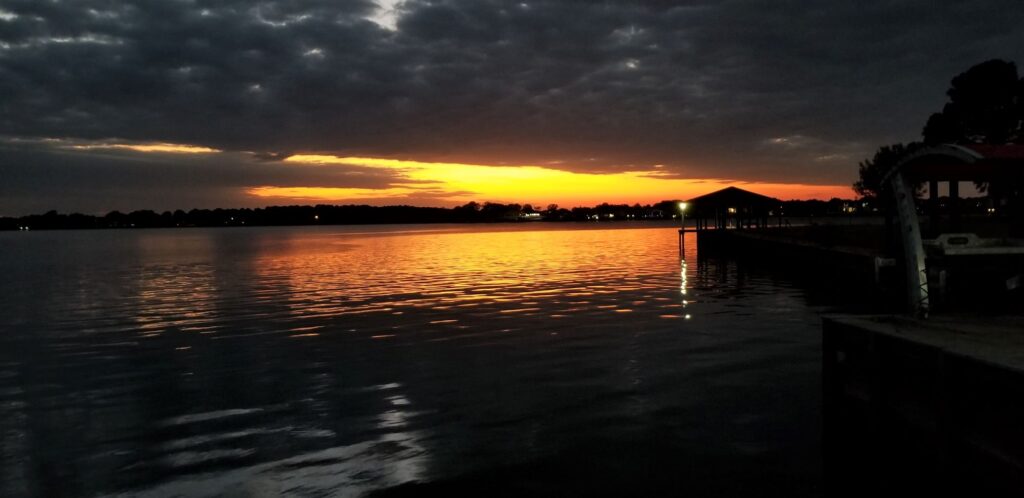
When I was a child, the space program was a nationwide interest. Alan Shepard and Gus Grissom, the first two Americans in space, were household names. They were considered American heroes, as were Buzz Aldrin and Neil Armstrong, the first two men to step onto the moon. Seeing the Space Center reminded me of the beginnings of the space race long ago.
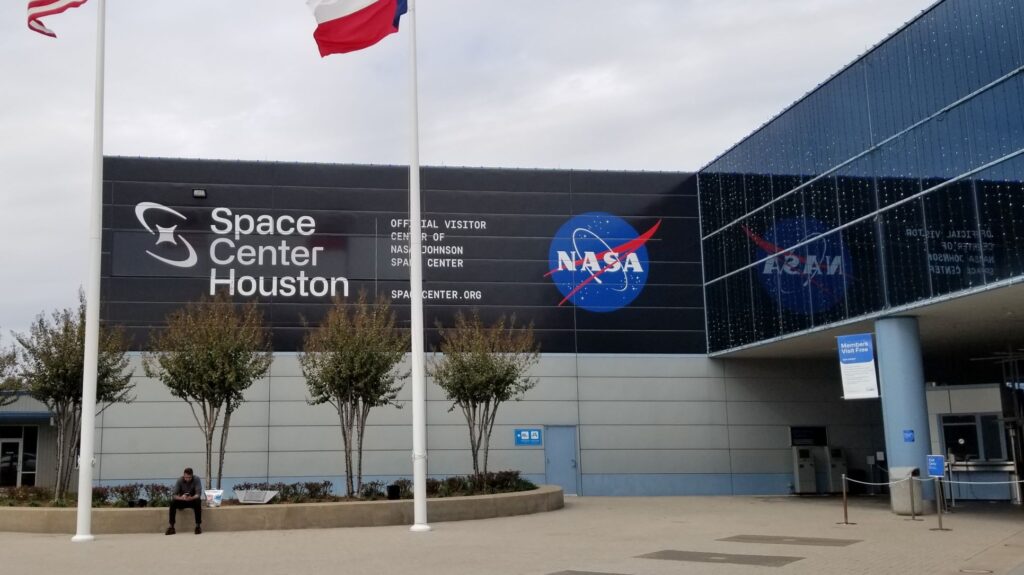
We started our tour in the main building of the museum.The day was cold and windy. It was home school day for the local home schoolers, so we felt right at home with everyone, remembering our own days of homeschooling.
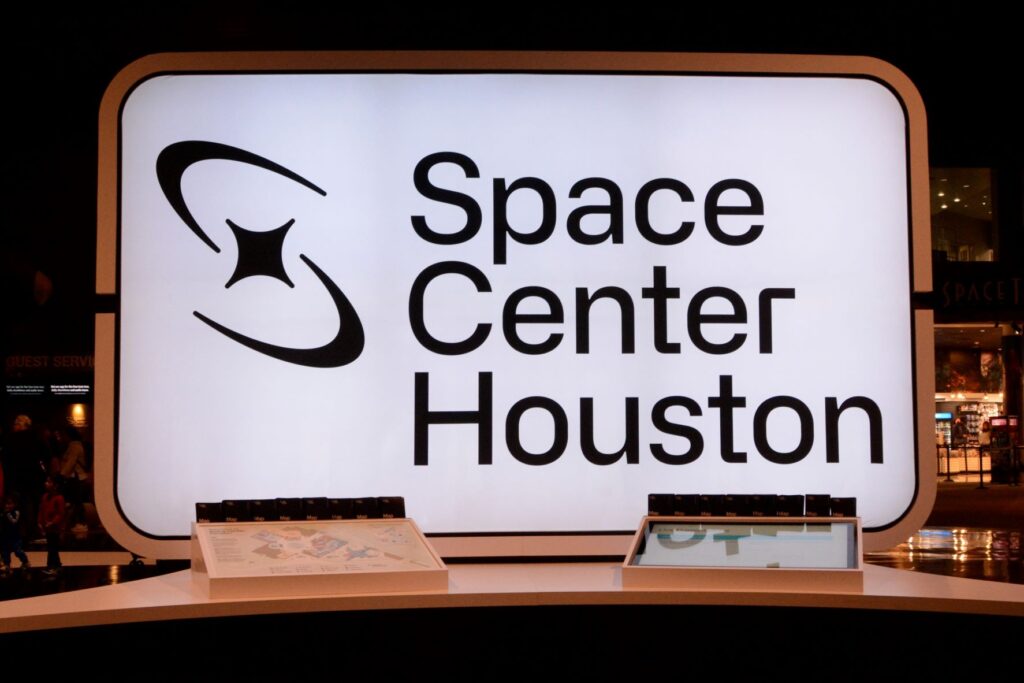
The Main building was huge and would have taken more time and energy to see all of it than we had. There were four main areas plus a Kids Space Place which had hands on exhibits for kids.
We watched a demonstration using a mock-up of the International Space Station and learned what it would be like to live there for an extended time. We also watched a short film of the history of space exploration in the Space Center Theater. As we wandered through the exhibits, we learned about the many aspects of space exploration and travel.
Outside the main building were the Falcon 9 Rocket and Space Shuttle exhibits. In addition, there were three NASA tram tours off-site: The Rocket Park, Mission Control and the Astronaut Training Facility. The Rocket Park was the only tour available on the day we visited because of a mission in progress.
The photos below show a few of the items in the main lobby.
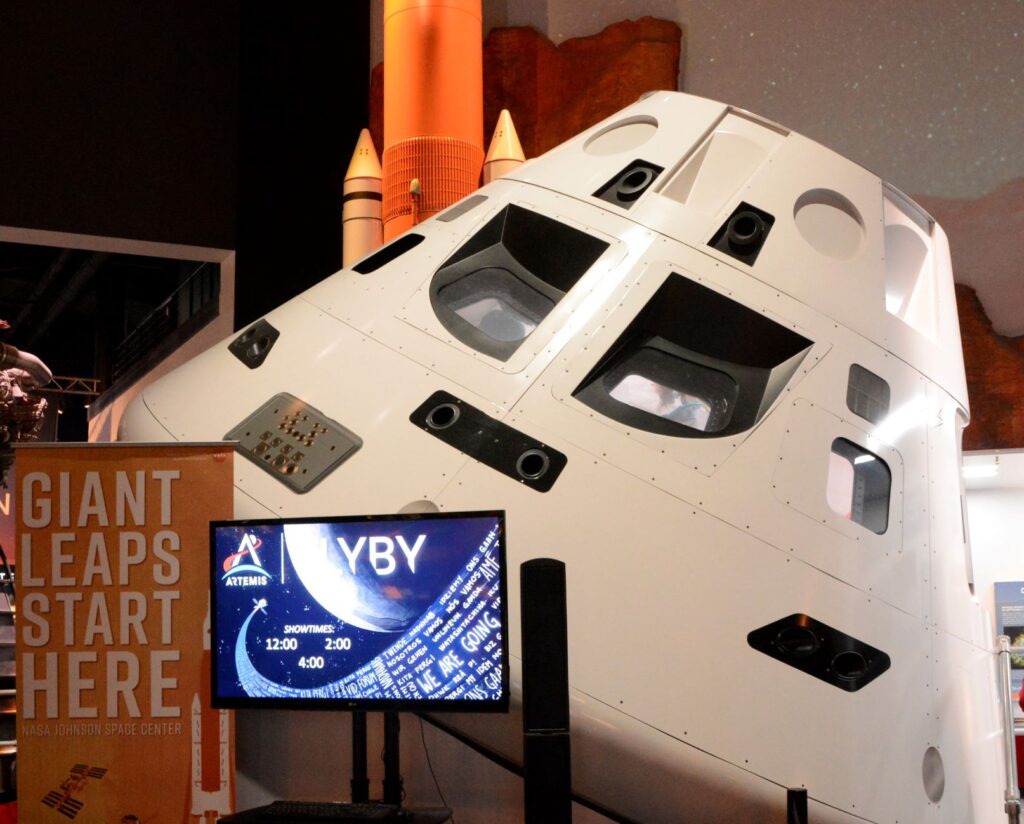
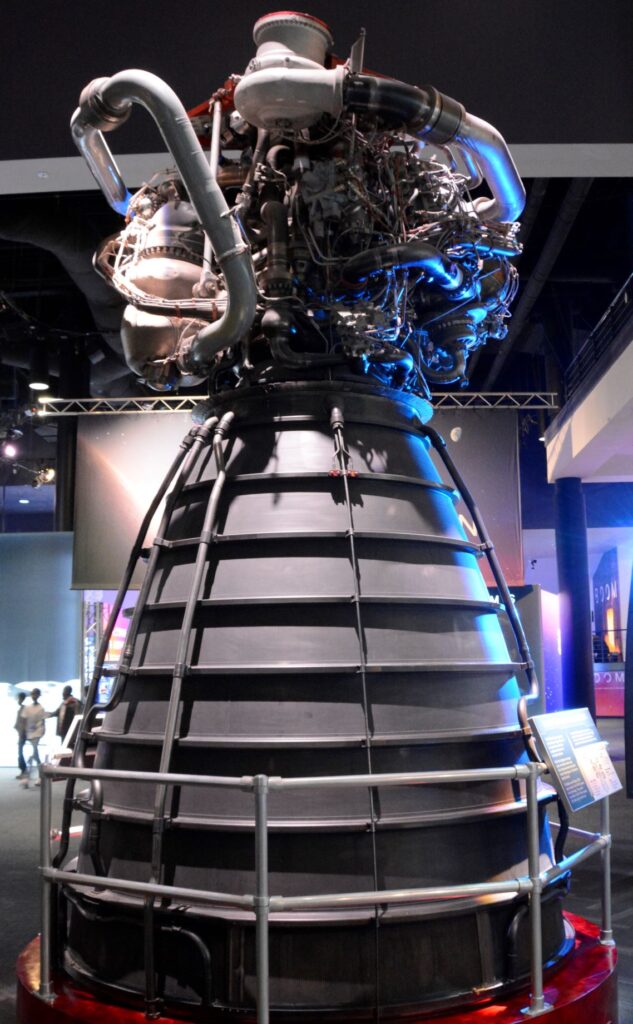
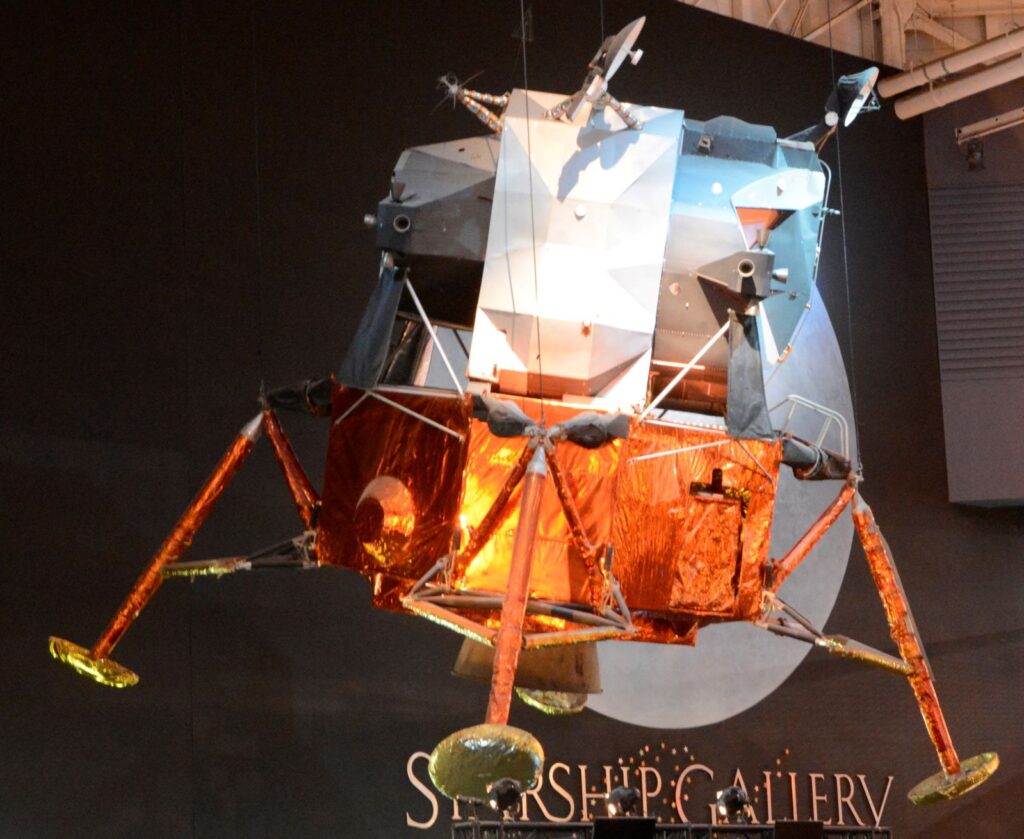
Some of you may be old enough to remember the first men to land on the moon. On our visit to the Space Center we got to see up close what it might have looked like on the moon. We could even touch a moon rock.
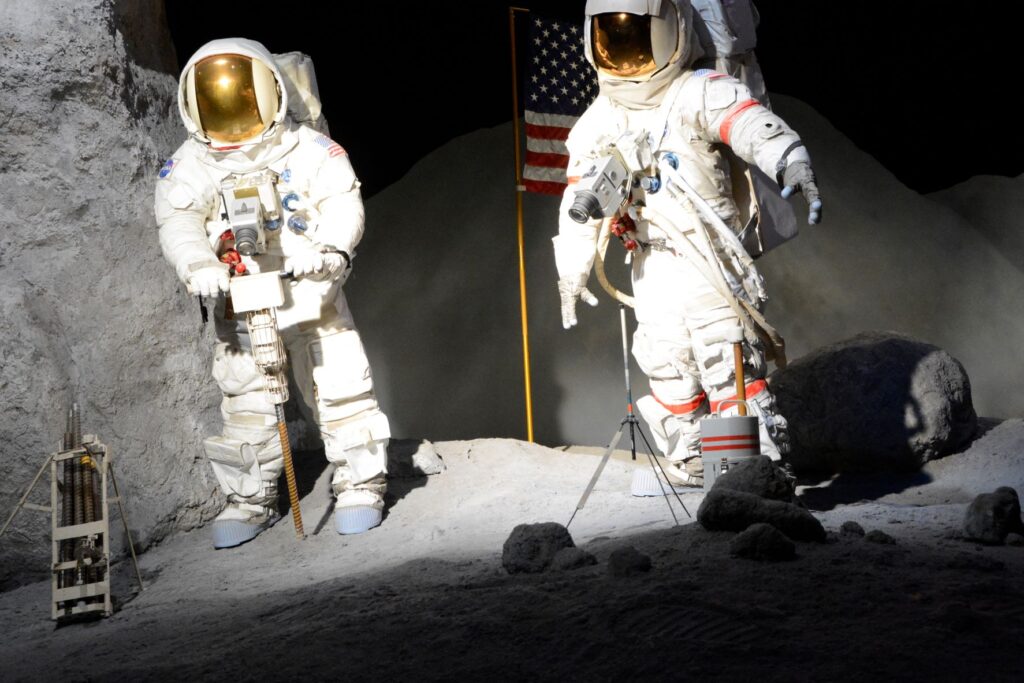
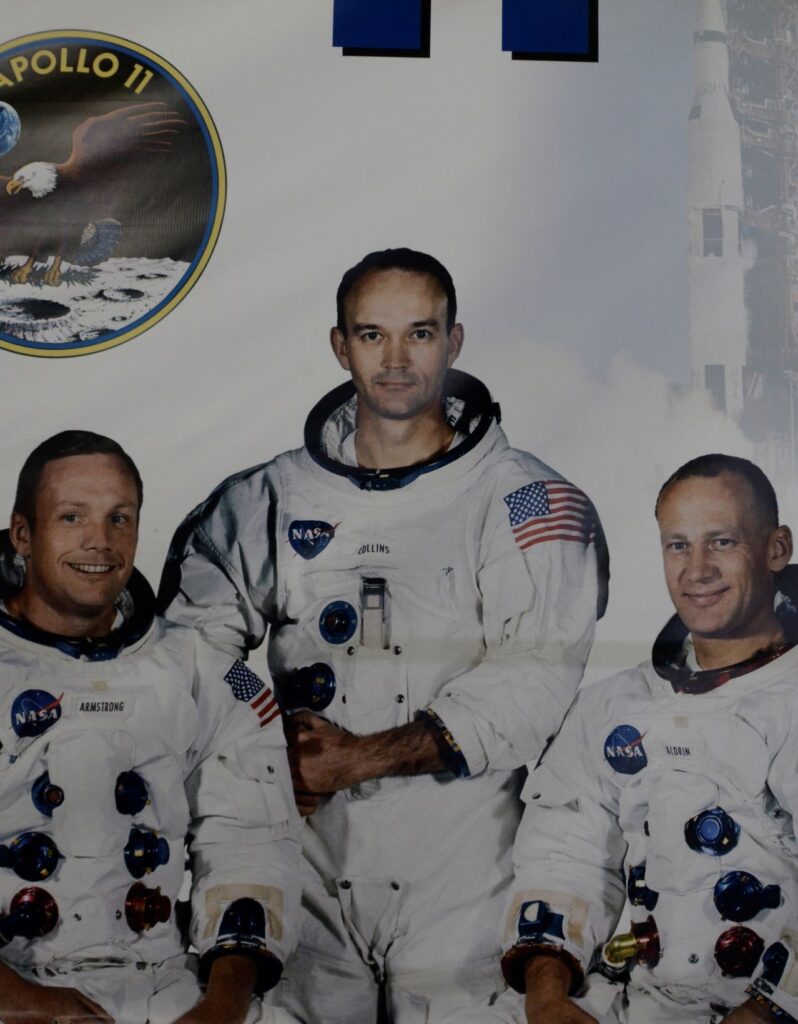
The Lunar Rover vehicle used in the moon landing had to have special tires made of a woven mesh of zinc-coated piano wire. The chevron pattern kept the wheels from sinking into the soft soil on the moon surface.
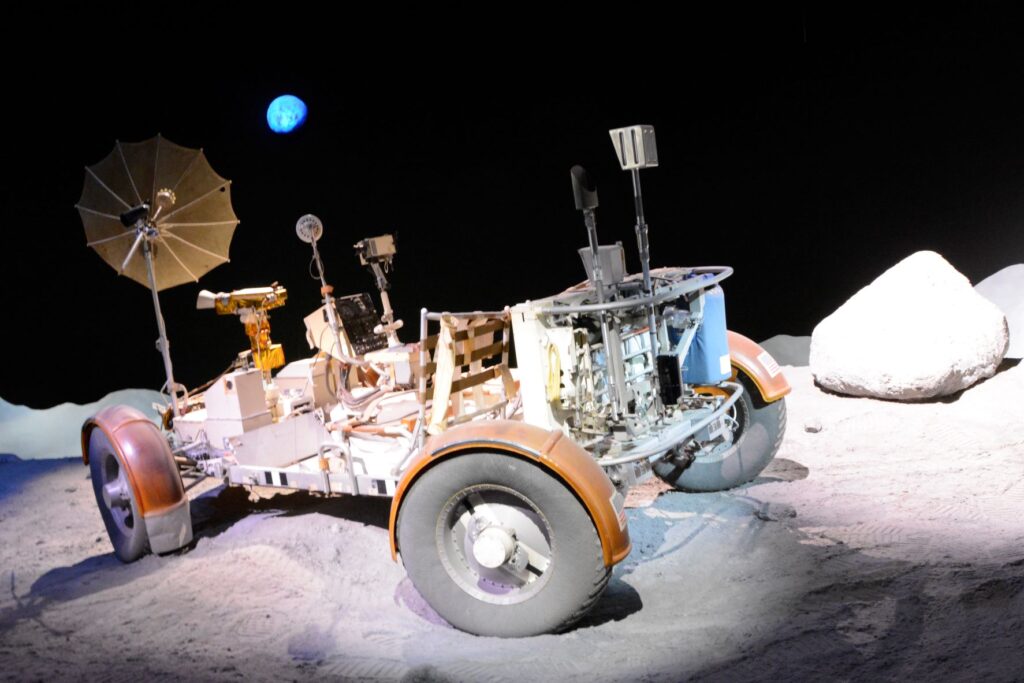
After seeing many of the exhibits, it was time for us to board the tram to the Rocket Park where the Saturn V rocket was housed. You can get an idea of the size of the rocket by the size of the building. The rocket was lying on its side the length of this building.
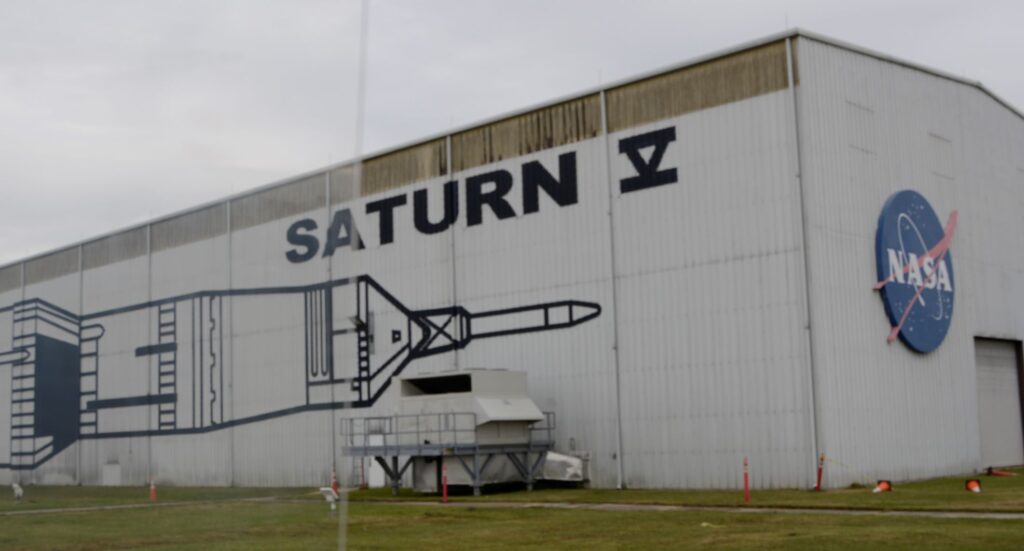
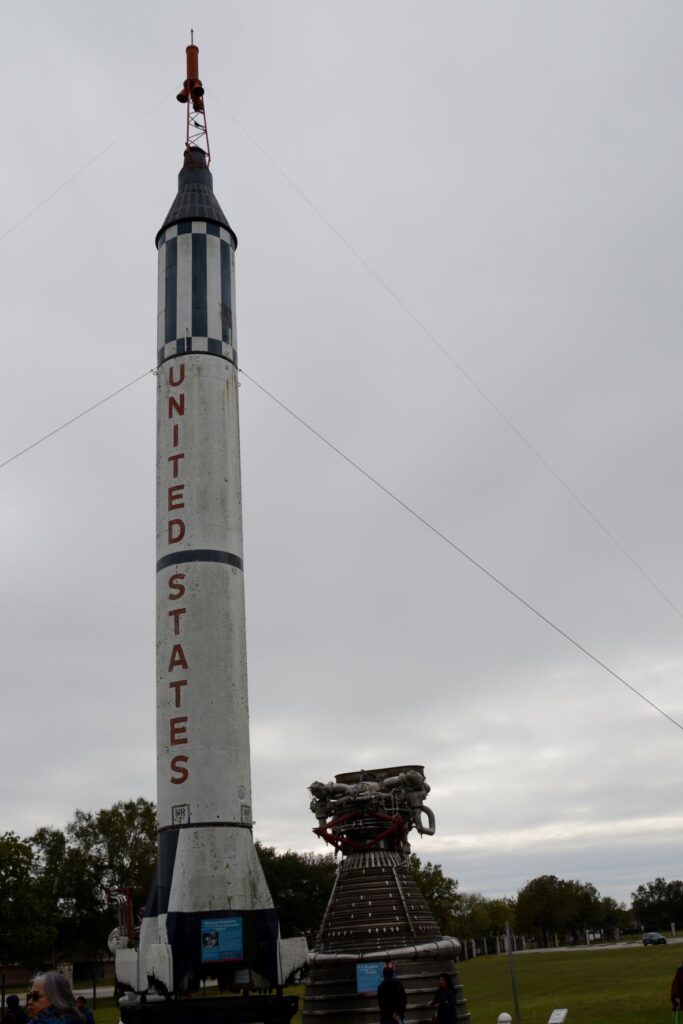
The Saturn V was the rocket that was used to launch the missions to the moon. It had to be massive enough to launch the crew, the lunar lander and the lunar rover all at once. As you can see, it fills the entire building.
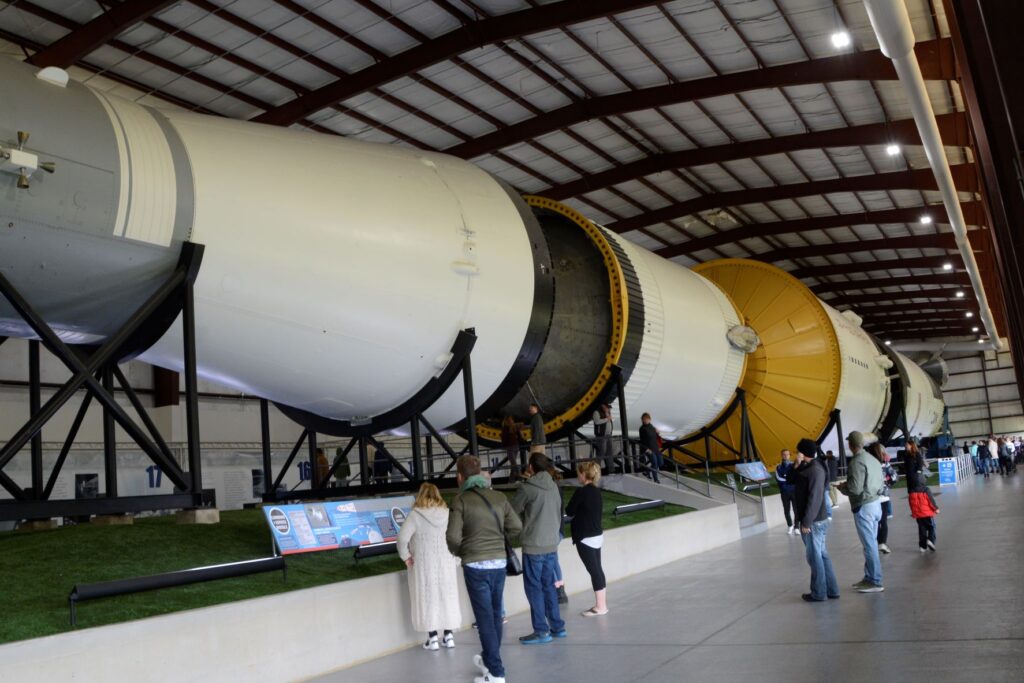
To get an idea of the immense size of the rocket motors on the Saturn V, I took this photo. Notice the man at the bottom of the photo for size reference. The Saturn V had 5 rocket motors on the first stage to launch it into orbit.
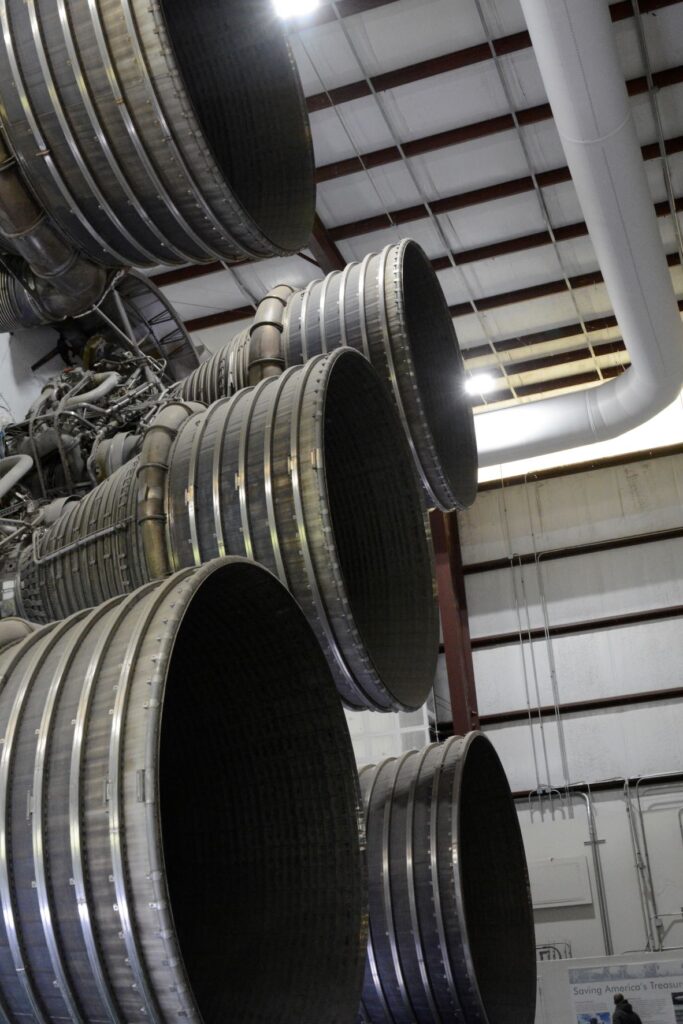
Three hours after the Apollo 11 mission was launched, the spacecraft left Earth’s orbit and began its three-day journey to the Moon.
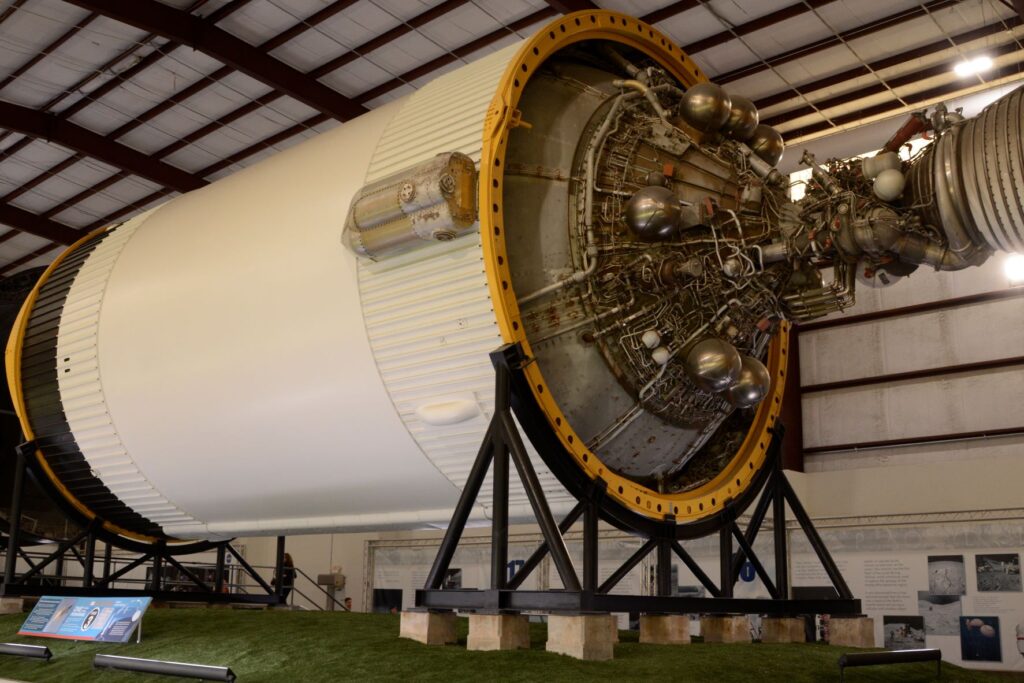
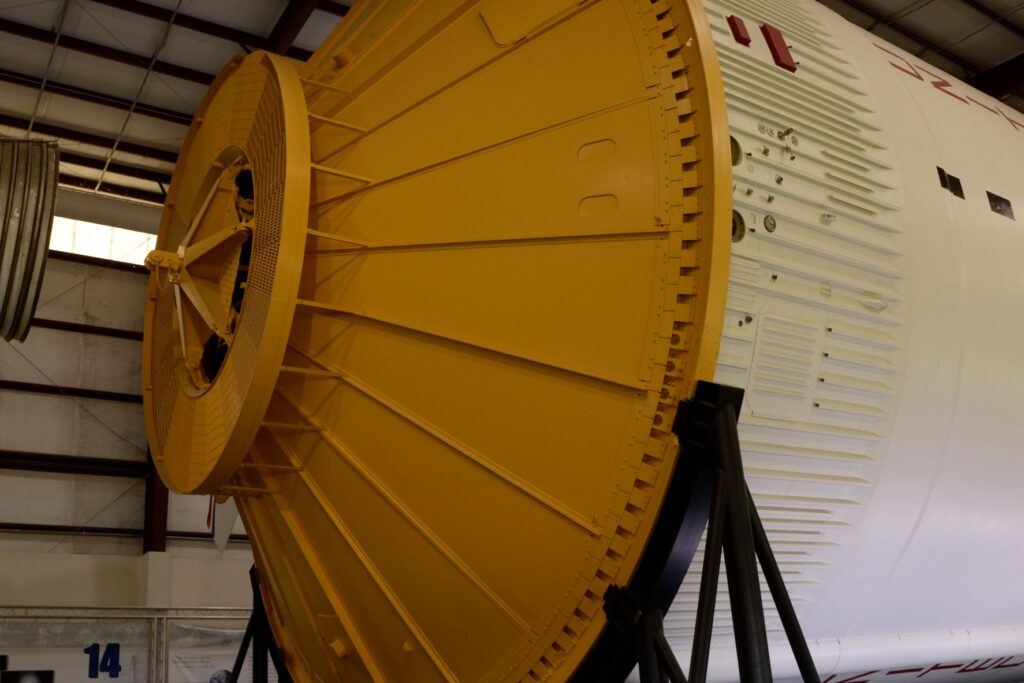
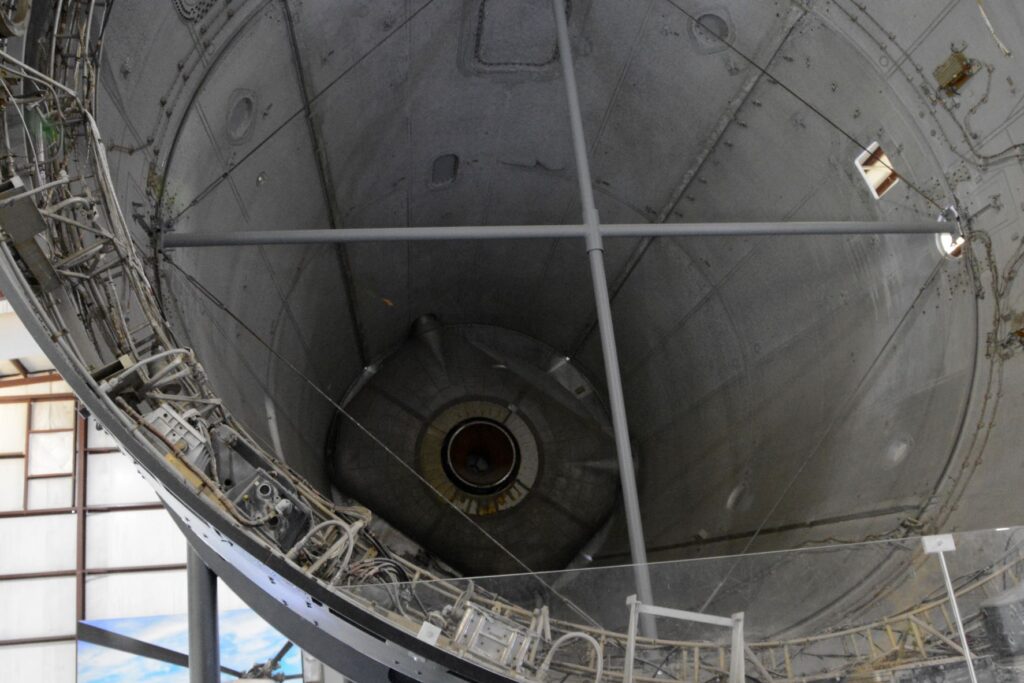
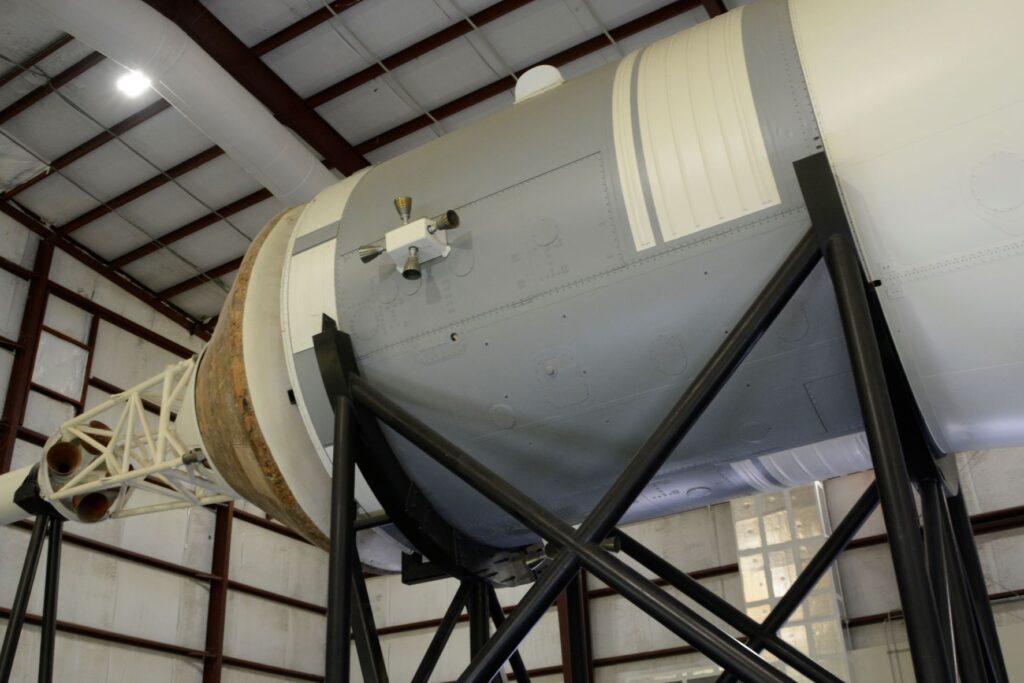
The lower stages were jettisoned from the rocket as the fuel burned up. On Apollo 11, the command module, Columbia and its command module pilot Michael Collins, would orbit the moon, while the other two crew members, once in position, would climb into the Eagle (lunar lander) and undock from the main spacecraft. From there, they would descend to the moon’s surface.
The diagram below explains the sections of the Command and Service Module. This shows how the Lunar module separated and got to the moon and back.

NASA’s next mission is to go to Mars. Although this seems ambitious to me, plans are already in progress.
Our visit to the Space Center was very informative. It made me think about the vastness of space. I was reminded of Psalm 8:3-4
“When I consider Your heavens, the work of Your fingers,
The moon and the stars, which You have set in place;
What is man that You think of him,
And a son of man that You are concerned about him?”
And again, Psalm 19:1
“The heavens tell of the glory of God;
And their expanse declares the work of His hands.”
The more we explore the universe, the more it shows the handiwork of God and the finiteness of man. Man has accomplished a lot in learning about our universe, but the knowledge that really matters is knowing the Creator of it all.
